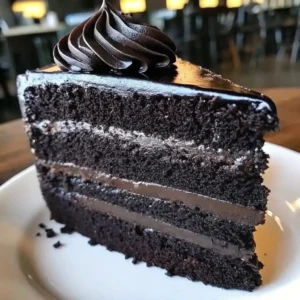Table Of Contents
Table of Contents
The Icon Behind the Dish: Who Was John Wayne?
John Wayne, born Marion Robert Morrison on May 26, 1907, in Winterset, Iowa, was more than a Hollywood actor—he was a cultural institution. Standing at 6’4” with a baritone voice and a commanding screen presence, Wayne became the embodiment of the American frontier spirit. His career spanned five decades and included over 170 films, with iconic roles in Westerns like Stagecoach (1939), The Searchers (1956), and True Grit (1969), for which he won an Academy Award.

Wayne’s persona as “The Duke” (a nickname inherited from his childhood Airedale Terrier) symbolized resilience, honor, and rugged individualism—traits that resonated deeply with post-war America. Off-screen, he was a devoted philanthropist, supporting veterans’ causes and cancer research after his battles with lung and stomach cancer. This duality—tough yet compassionate—laid the groundwork for his unexpected legacy in the culinary world: the John Wayne Casserole.
The Origins of John Wayne Casserole: A Recipe Rooted in Charity
In the early 1970s, as cancer awareness campaigns gained momentum, the American Cancer Society sought celebrity endorsements for a charity cookbook. John Wayne, then a cancer survivor, contributed a family-friendly casserole recipe. The dish, featuring layers of ground beef, cheese, and a biscuit crust, was designed to be affordable, easy to prepare, and satisfying—qualities that mirrored Wayne’s down-to-earth persona.
The recipe quickly transcended the cookbook, earning the name “John Wayne Casserole” in newspapers and community cookbooks. Its popularity surged not only because of its connection to Wayne but also due to its adaptability. Home cooks embraced it as a blank canvas, adding regional twists while preserving its hearty core.
Crafting the Classic: John Wayne Casserole Recipe
Ingredients You’ll Need
- Ground Beef:
- Represents practicality and sustenance, reflecting Wayne’s no-frills approach to life.
- Tip: Use 80/20 beef for juiciness, or substitute with ground turkey for a leaner option.
- Vegetables:
- Onion and Bell Pepper: Provide sweetness and crunch, balancing the dish’s richness.
- Ro-Tel Tomatoes with Green Chilies: Introduces a tangy, Southwestern kick—a nod to Wayne’s Western film legacy.
- Creamy Layers:
- Sour Cream and Mayonnaise: Create a velvety texture, symbolizing comfort and indulgence.
- Cheese:
- Cheddar: Melts into gooey perfection, embodying the dish’s unifying, crowd-pleasing nature.
- Bisquick Crust:
- A 1970s pantry staple, representing the era’s love for convenience without sacrificing flavor.
For those looking to infuse a touch of holiday tradition into their meal, consider trying our Old-Fashioned Sweet Potato Casserole: A Timeless Holiday Favorite, which brings a delightful seasonal twist to any comfort-food spread
Step-by-Step Recipe: Crafting the Classic
- Preheat and Prep:
- Preheat oven to 350°F (175°C). Lightly grease a 9×13-inch baking dish.
- Cook the Filling:
- In a skillet, brown 1 lb ground beef over medium heat. Drain excess fat.
- Add 1 diced onion and 1 chopped bell pepper; sauté until softened (5–7 minutes).
- Stir in 1 can (10 oz) Ro-Tel tomatoes and 1 packet of taco seasoning. Simmer for 10 minutes.
- Layer with Precision:
- Crust: Combine 2 cups Bisquick mix with ½ cup water. Press dough into the baking dish.
- Meat Layer: Spread beef mixture evenly over the crust.
- Creamy Layer: Mix ½ cup sour cream, ½ cup mayonnaise, and 1 cup shredded cheddar. Spread over the meat.
- Cheese Topping: Sprinkle remaining ½ cup cheddar.
- Bake and Serve:
- Bake for 25–30 minutes until golden. Let rest for 10 minutes.
- Garnish with fresh cilantro, avocado slices, or pickled jalapeños.
Regional and Modern Adaptations
Tex-Mex Fusion
- Add 1 cup black beans, ½ cup corn, and 1 diced jalapeño. Top with crushed tortilla chips for crunch.
Vegetarian Delight
- Replace beef with 2 cups of cooked lentils or plant-based crumbles. Add roasted poblano peppers for smokiness.
Breakfast Casserole
- Layer scrambled eggs, breakfast sausage, and hash browns. Top with Monterey Jack cheese.
Keto-Friendly Version
- Substitute Bisquick with a crust made from almond flour, melted butter, and Parmesan cheese.
If you enjoy the satisfying simplicity of this dish, you might also appreciate our Hobo Casserole Recipe: A Hearty Budget-Friendly Comfort Food, which offers a similarly comforting and economical meal option

Cultural Significance: Why This Dish Resonates
The John Wayne Casserole emerged during the 1970s—a decade defined by economic uncertainty and a return to home cooking. Casseroles became synonymous with frugality and communal dining, and Wayne’s recipe epitomized these values. Its layered structure—protein, vegetables, dairy, and carbs—offered a complete meal for families on a budget.
The dish also bridged regional divides. The use of Ro-Tel tomatoes (a Texas staple) and Bisquick (a Midwestern favorite) created a culinary fusion that appealed to households nationwide. Today, it remains a potluck staple, evoking nostalgia for both Wayne’s films and the simplicity of mid-century Americana.
Nutritional Breakdown and Health-Conscious Tweaks
| Aspect | Details |
|---|---|
| Caloric Profile | Approximately 450–550 calories per serving; 30g fat, 25g carbohydrates, and 25g protein. |
| Lean Proteins | Substitute beef with 93% lean ground turkey or chicken. |
| Low-Fat Dairy | Use non-fat Greek yogurt instead of sour cream. |
| Vegetable Boost | Stir in 1 cup of spinach or zucchini for added fiber. |
| Gluten-Free Option | Replace Bisquick with a gluten-free pancake mix. |
John Wayne’s Philanthropy and the Recipe’s Legacy
Wayne’s contribution to the American Cancer Society cookbook was more than a publicity stunt—it was an extension of his advocacy. After undergoing lung cancer surgery in 1964, he became one of the first celebrities to speak openly about the disease, helping destigmatize cancer in an era of limited public awareness.
The casserole’s inclusion in the cookbook raised significant funds for research, while its simplicity ensured accessibility. Families struggling with medical bills or time constraints found solace in a dish that was both nourishing and easy to prepare.
FAQs: Addressing Curiosities and Myths
Did John Wayne cook this dish?
There’s no historical record of John Wayne being a professional cook or having a culinary background. Instead, the recipe was shared under his name as part of a charitable initiative. His involvement helped draw attention to the cause, and the simplicity of the recipe complements his practical, no-nonsense persona. The association with Wayne serves as a tribute rather than an indication of his cooking skills.
Why has the recipe endured for over 50 years?
The longevity of the John Wayne Casserole can be attributed to its remarkable adaptability and affordability. Over the years, home cooks have embraced its hearty, comforting nature and the flexibility to adjust ingredients according to personal taste or dietary needs. Moreover, the nostalgic connection to John Wayne’s enduring legacy continues to resonate with fans and families, making it a timeless classic.
Can I make it ahead of the crowd?
Absolutely! The casserole can be assembled up to 24 hours in advance and refrigerated. Simply bake it just before serving to enjoy its freshly cooked flavors and textures.
What sides pair best with this dish?
For a well-balanced meal, pair the casserole with garlic bread, a crisp Caesar salad, or a medley of roasted vegetables. These sides provide a complementary contrast that enhances the overall dining experience.
Conclusion: A Dish as Iconic as Its Namesake
The John Wayne Casserole is more than a meal—it’s a culinary time capsule. From its charitable roots to its layered flavors, it encapsulates the spirit of an era defined by resilience and community. Whether you’re a film buff, a history enthusiast, or a home cook seeking comfort, this dish invites you to savor a slice of Americana, one hearty bite at a time.



